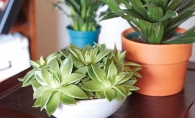There’s a saying that when life hands you lemons, you should make lemonade. In 2003, when Sally and James Strand experienced more than 7 inches of rainfall, which caused the lower level of their mid-century modern home to flood, they were forced to dig up their entire front yard and an exterior wall of their house to address the matter. Sally Strand turned the inconvenient event into the perfect opportunity to create an Asian-inspired serenity garden. Indeed, they needed a little serenity at that point.
The couple purchased the home that sits on a triangular lot and includes 255 feet of waterfront on a channel of Bass Lake in 1991. Through the years, Sally completed several gardens on the back and side of the property, but this unlucky event allowed her to really examine the abode with a fresh eye. “I looked at the front porch of our house, and it reminded me of a Japanese teahouse, so I thought, OK, I’m going to have an Asian-inspired garden, because Japan and China both have winters, and the whole idea is to look good all year long by using different greens and textures,” she says.
Strand read numerous books on the symbolism and style of Asian-inspired gardens, and visited gardens locally for further inspiration. She didn’t start out with a plan on paper; much like the flowers, trees and bushes she planted, this Asian-inspired oasis grew and evolved over time.
A few months after her front yard was dug up, a pile of mud morphed into a garden—with several ornamental crane and bird statues, symbolic of longevity—which runs almost the entire length of the yard and was the literal backbone of the project. Within this space and another area are numerous mini gardens imbued with shapes of Chinese icons that represent the soul, a river, water, clouds, gourds and scenery reminiscent of faraway lands. There is a rain garden, a strolling path, a tea garden, a native garden, a woodland garden, a Zen garden (places for reflection often incorporating hardscape elements like white sand or rocks raked into various shapes) and more; each detail is meticulously scrutinized and thought out.
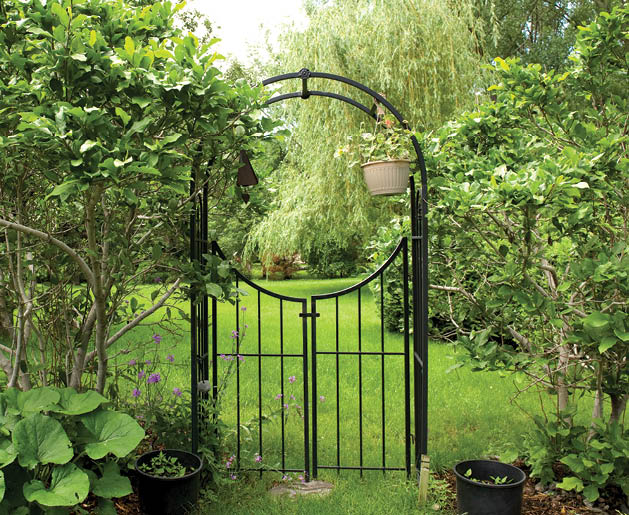
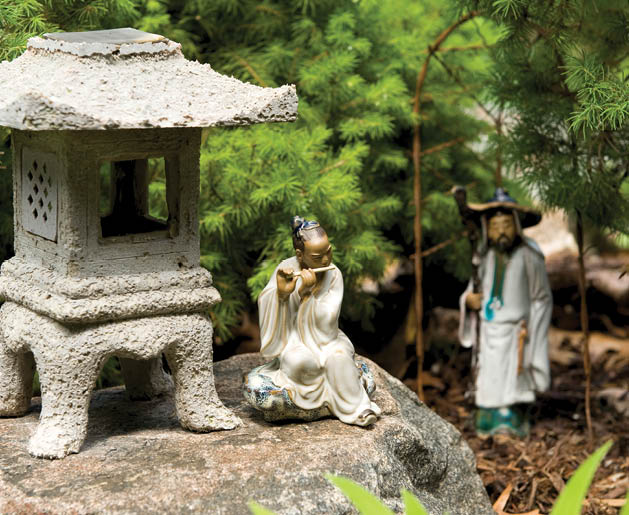
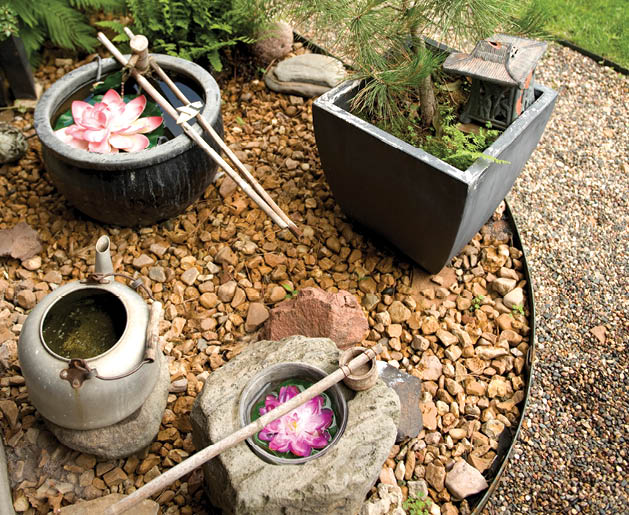
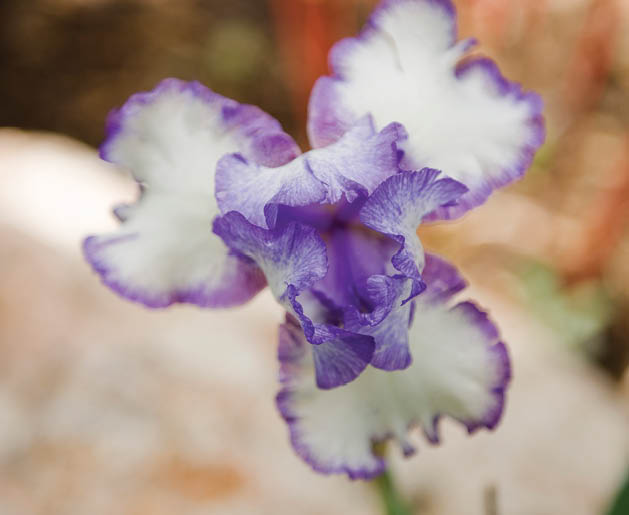
Her plant, tree and shrubbery list is expansive, and includes everything from a brilliant Eastern red bud tree, a double red plum, a weeping white pine and junipers, to azalea, rhododendron, dogwoods and a host of native and non-native plants—not to mention more than a dozen different varieties of Asiatic lilies, 16 kinds of iris and many daylilies. There are literally hundreds of plants, trees and shrubs in the garden.
As a general rule, Japanese or Asian-inspired gardens differ greatly from, say, English gardens, insofar as they have only a few flowering items. “We don’t have many flowers here,” Strand says. “You bring them in as a spot of color here, and you walk five or 10 feet and you see another spot of color there. The idea is to stop and contemplate the beauty of that one flower.”
As an amateur photographer, Strand understands subtlety, and her Asian-inspired garden perfectly reflects the quiet, subtle art form. After years of work, she can now stand in her house and see her garden from every room. It wasn’t easy, but it was worth every hour of toil.
“The garden has soothed my soul, exercised my body and helped my creative energies,” she says. “I couldn’t ask for more than that.”
Symbolizing good fortune and longevity, the crane is a mainstay in any Asian-inspired garden.
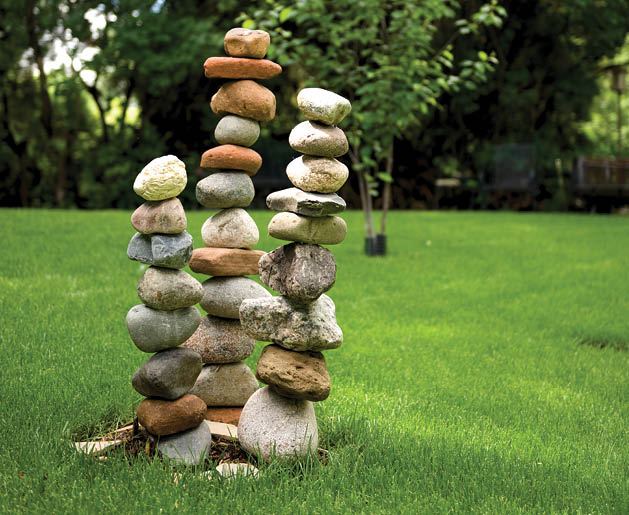

How to Create a Japanese Garden in Plymouth
Interested in creating your own Asian-inspired garden? Sally Strand created a small book to hand out to recent garden tour visitors on elements of an Asian-inspired garden design and, lucky for us, she’s allowed us to share some of her suggestions here:
Water features: As one of the four classical elements, water plays an integral role in Asian-inspired gardening. Try adding a fountain, pond or dry riverbed, Strand suggests.
Dry features: Typically called Zen gardens, these places for reflection and solitude include elements such as gravel, white sand and rocks, and are often raked into various shapes.
Stones and boulders: Strand sometimes arranges her rocks by color, then into scalene triangles, which perfectly represent islands amid a sea of foliage.
Strolling paths: Made of grass or pebbles and often curvy, paths will allow visitors to contemplate the various angles of their beautiful surroundings.
Fences and gates: Strand’s garden includes several small bamboo gates and her favorite, a metal moon gate: a gate that’s shaped like a large circle when closed, resembling a full moon.
Garden accents: As a lover of art, Strand suggests incorporating ornamental accents into a garden. (Tip: Scour local consignment and thrift stores for items that would work in an Asian-inspired garden. “There are always items that might not fit in other people’s gardens but would work well in one of these,” Strand says.)
Water basins: Placed most often at the entry of the garden, a hollowed-out cement stone and bamboo dipper allow visitors to cleanse their body and, symbolically, their soul before entering the garden.
Flowers: In a Japanese garden, flowers, like this iris, bring in a spot of color.
Borrowed vista: The scenery beyond your own garden that you use as a background is as important as the backdrop on a theater stage.
The elements—wind, water, earth, fire, wood, metal: Chimes, fountains, stones, red items, bamboo and sculptures symbolize these important elements in Strand’s garden.











